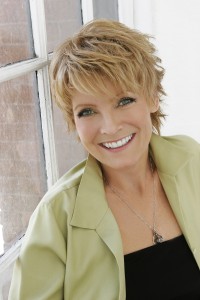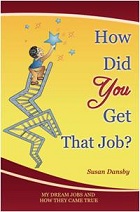In Part 2 of this two-part interview, casting director Mary Clay Boland goes into more detail about how theatre actors are hired.
 Susan Dansby: So then you get a feel for what everybody is looking for and then…
Susan Dansby: So then you get a feel for what everybody is looking for and then…
Mary Clay Boland: And then, the casting director or the casting associate – it depends on who’s taking the lead on the project – has multiple pre-screens: Which means you put out what’s called the breakdown, through Breakdown Services and list the roles that you’re looking for.
Then you get agent submissions, and then you also come up with your own idea lists. And if you going to go celebrity – if you are going to do that type of casting – it’s all just lists. And then you have meetings and make offers.
If you’re looking for a fresh face, then you put out the breakdowns, you get agent submissions, and then you pre-read people; and then you bring people in for the producer and director.
Susan Dansby: Now, when you send out the breakdowns, only agents get those?
Mary Clay Boland: Only people who pay for Breakdown Services. It’s usually agents, some managers – there’s a rogue actor here and there, but technically actors are not supposed to get them. But I think a few individuals have been known to get them – more power to them. It’s usually just the industry people who represent actors that receive them.
Susan Dansby: So, is that generally the only place that that you post those things?
Mary Clay Boland: It is. I mean, back in the day if I was doing was non-union project or something, or when I’ve done open calls – which I’ve done for multiple projects – then that’s a different beast. Then you promote that in Backstage and on Equity’s bulletin board, or now online, or Playbill.com, and newspapers and radio stations. And you put out basically open calls.
That happens quite a bit, but we try and keep it a little more contained than that. It’s usually with children that you do massive searches.
Susan Dansby: Because that casting pool changes over.
Mary Clay Boland: Exactly.
Susan Dansby: So, you put out the call…
Mary Clay Boland: Right, and then we have what we call the producer-director session. And that’s when you try and narrow down to three-to-five actors for a specific role. You bring them in for all the powers that be. And then, hopefully, after those sessions, you come up with a cast.
If there’s specific people that are working together, you want to kind of picture it all as an ensemble. We’ve been known to put head shots out on the floor and kind of look at the cast – if it is a huge cast – and see if it’s all going to work and who is going to go with who.
Usually, you try and only have a couple days of producer-director sessions; but sometimes, if they don’t like what they are seeing, then you have to switch gears.

